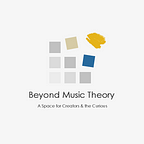The Sound and Function of Chord Inversions
Chords aren’t always played in their root position, like a C major with the notes C E and G in this order. While remaining the same, the notes of the chord may change places for practical reasons that may relate to the instrument you play, to facilitate going from chord to chord, or for other aesthetic musical reasons in order to achieve a different harmonic feel. That said, a chord inversion is when the lowest note of the chord is not its root.
Triads have three possible inversions and, using the C major chord as example, they are called root position with C on bass, 1st inversion with E on bass (the third of the chord), and 2nd inversion with G on bass (the fifth of the chord). Below you will see the C major chord in root position, 1st inversion and 2nd inversion:
There are as many inversions as the notes or extensions on the chord. So, if we have a seventh chord and its 7th degree is on bass, this would be called the 3rd inversion; a ninth chord with the 9th on the bass would be called the 4th inversion, and so on.
When a chord inversion is to be played or to know which note of that chord is to be played on the bass, the addition of the slash symbol is used separate the chord itself from the actual bass note — these are usually called slashed chords. So, when you see any chord represented like C/E, means that it’s a C major chord with E on the bass (the 1st inversion). It is the same even with more complex chords C∆9 #5/D — a Cmaj9 chord with augmented 5th with D on the bass; a 4th inversion.
In a chord progression, using different notes on the bass of some of the chords is a way of enriching the harmonic content and also to make smoother transitions between chords:
Make sure to visit the blog @Beyond Music Theory
